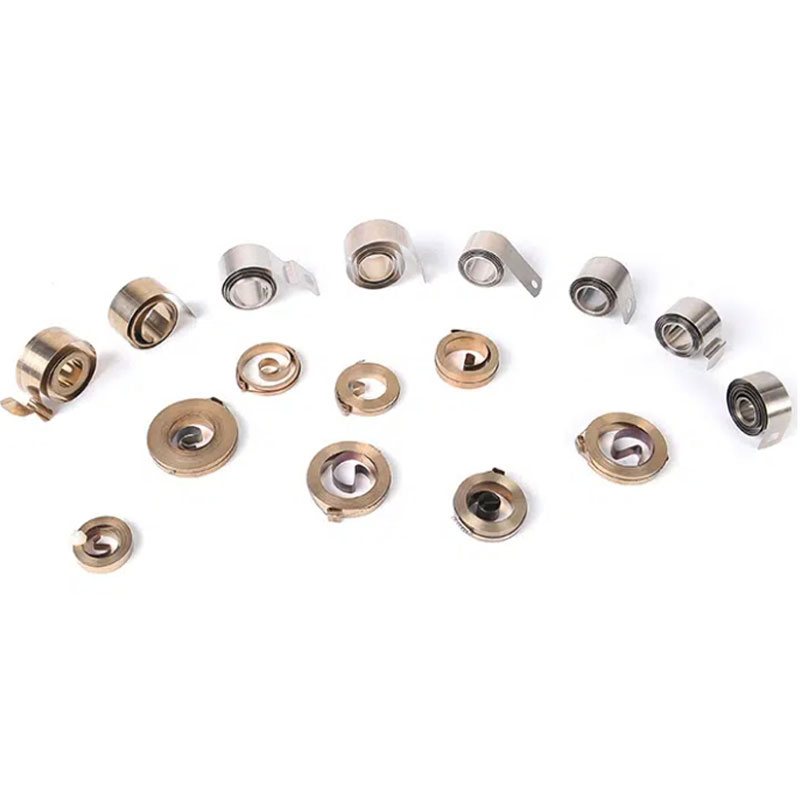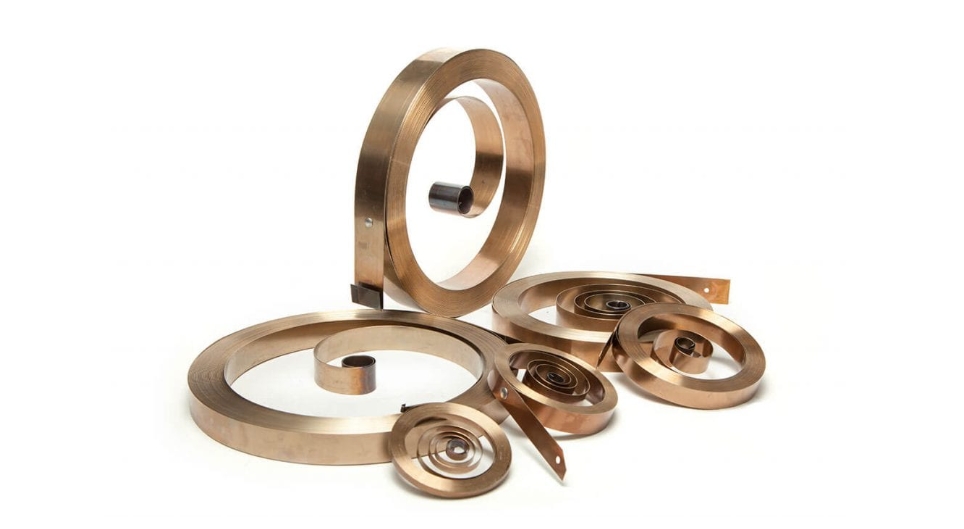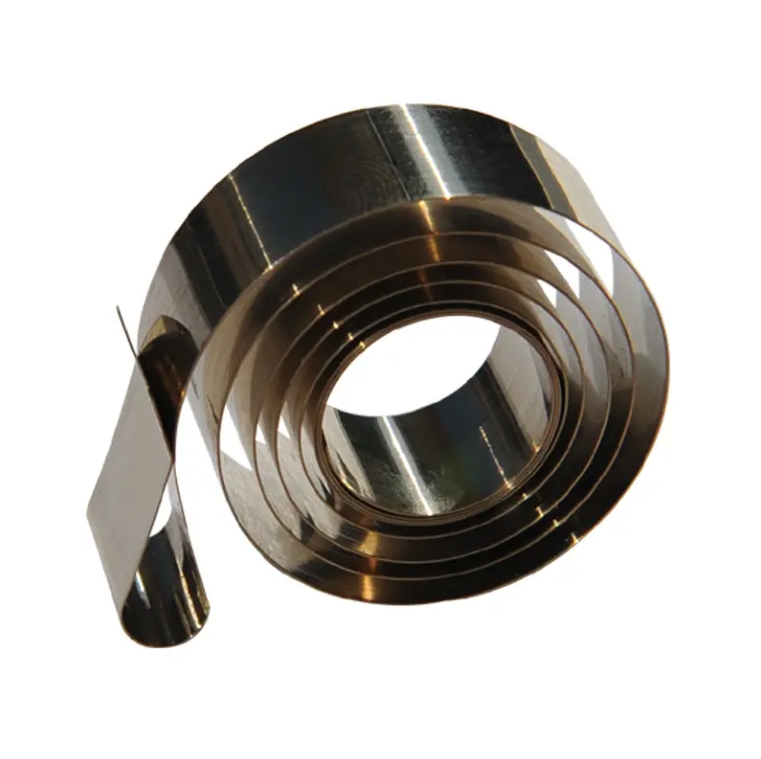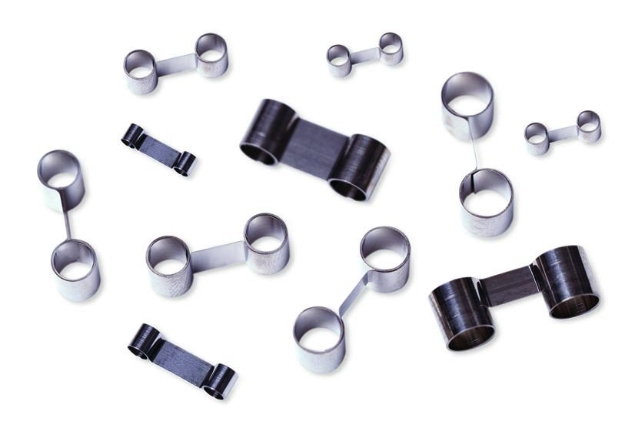In mechanical engineering, the power spring—also known as a spiral or constant torque spring—plays a vital role due to its unique structure and performance. These springs are essential components in a wide range of applications. This article offers an in-depth exploration of power springs, including their principles, classifications, material selection, and design insights.
I. Fundamental Principles and Types of Power Springs
A power spring is a spiral-shaped spring coiled in a flat plane. When one end is fixed and torque is applied to the other, the material undergoes bending, resulting in planar elastic deformation. The resulting angular displacement is proportional to the applied torque. These springs are known for their high torque output, broad deflection range, and exceptional fatigue resistance, making them highly versatile and somewhat analogous to torsion springs.
Common types of power springs include:
1. Constant Force Springs
Made from pre-stressed stainless steel strips, constant force springs unwind when extended and rewind automatically, producing a nearly constant force over their stroke. This makes them ideal for:
-
Vertical window balances
-
Adjustable monitor arms
-
Display shelf pushers
-
Carbon brush assemblies in electric motors
Their ability to retract smoothly and maintain consistent force streamlines operations and enhances user comfort.

2. Constant Torque Springs
Also manufactured from coiled stainless steel, these springs store energy when wound and release it with a constant torque when allowed to unwind. They are commonly used in:
-
Wind-up toys
-
Timers
-
Retractable mechanisms such as cable reels and seatbelt retractors
For instance, a wind-up toy uses the released torque from this spring to perform various mechanical movements.

3. Power Springs
These are coiled inside a housing and typically connected to a central shaft. When torque is applied, the strip tightens around the shaft, storing energy, and when released, it delivers rotational energy back to the system. Applications include:
-
Mechanical timers
-
Clock mechanisms
-
Fitness equipment
-
Spring-driven reels
They provide precise, repeatable, and stable torque output.

4. Variable Force / Variable Torque Springs
These springs break the limitations of Hooke’s Law, allowing non-linear force-displacement behavior such as negative slopes or stepped force outputs. They are designed for customized force profiles and are used in:
-
Safety belt retractors
-
Shelf pushers in retail
-
Pen-type injectors (e.g., insulin pens)
They offer tailored responses to specific mechanical needs.

5. Carbon Brush Springs
Also known as motor brush springs or constant force motor springs, they ensure constant contact between carbon brushes and commutators in motors. This maintains stable pressure, minimizes wear and sparking, and improves motor performance under high-speed conditions.

II. Material Selection for Power Springs
Choosing the right material is critical to spring performance, durability, and cost. Common options include:
1. Carbon Spring Steel
-
Affordable and strong
-
Suitable for low-cycle applications under static load
-
Best for budget-sensitive designs with minimal mechanical demands
2. Alloy Spring Steel
-
High strength and impact resistance
-
Good high-temperature performance
-
Ideal for high-load or shock-resistant applications such as heavy-duty machinery
3. Stainless Steel
-
Excellent corrosion and heat resistance
-
Preferred in harsh environments like marine or chemical applications
-
Commonly used grades: SUS301, SUS304
4. Copper Alloys
-
Good anti-corrosion and anti-magnetic properties
-
Relatively low strength
-
Suitable for small force applications, especially in electronics where magnetic interference is a concern
Selecting the optimal material requires evaluating the application’s mechanical load, environmental conditions, and cost constraints.
III. Key Design Considerations for Power Springs
When designing a power spring, several critical factors must be considered to ensure optimal performance and reliability:
1. Material Selection
Choose cost-effective materials without compromising quality. For instance, SUS301 stainless steel offers a good balance between cost and performance.
2. Service Life
Each stretch and recoil cycle affects the spring’s life span. A spring with too short a life will fail prematurely, while one with excessive durability may unnecessarily increase costs. Life cycles must match product requirements.
3. Force Accuracy
The spring’s output force must meet application demands. Acceptable force tolerances typically range within ±10%, depending on manufacturing precision and usage context.
4. Installation Space
The coiled diameter depends on material thickness, force output, and desired lifespan. Designers must carefully consider spatial constraints and match material dimensions accordingly.
5. Dimensional Accuracy
Precise specification of spring width, outer diameter, and length ensures compatibility with the installation and mechanical system.
6. Operating Environment
Corrosive or extreme temperature environments can significantly reduce spring life. Understanding these conditions helps guide material choice and spring design for optimal durability.
7. Tail-End Geometry
Tail shapes typically require custom tooling. While manufacturers like Hengsheng offer standard molds, custom solutions are available for specialized installations.
Conclusion
Power springs serve as an “energy hub” in modern mechanical systems. A deep understanding of their structure, functionality, material properties, and design parameters is essential for both engineers and product developers. From whimsical toys to precision machinery, these springs continue to expand their reach across industries.
We encourage professionals and enthusiasts alike to apply these insights in practice. If you discover new applications or face unique challenges while working with power springs, feel free to share your experiences—let’s explore the fascinating world of mechanical innovation together.
